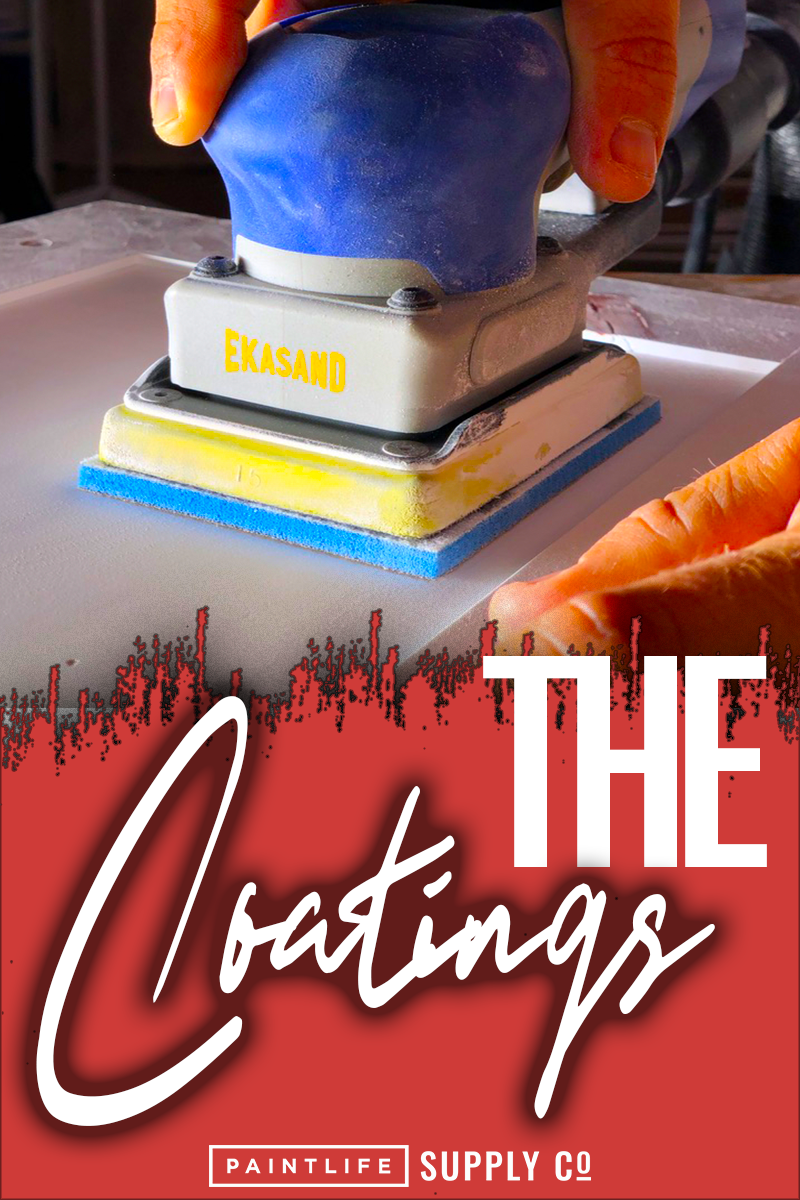
The Coatings
So, what are the different coatings you’ll see, and what should they be used for?
There are generally three types of coating options available: open, semi-open and closed – each with a different ratio of grain and each with a different optimal application. There can be some variation in the terminology used between different manufacturers, but, for now, we’ll focus on these.
Closed Coat
A closed coat offers the most grain coverage, coming in around 90-95% coverage on the product.
This type of coating is best for sanding in a raw wood state, meaning, sanding with coarser grains. This works well because the rough sanding produces larger pieces, and with harder woods, there is also less pitch (wood resin), so heat has less of an impact. This means there is less need for space between grains because it will not load as much in the first place. Additionally, with coarser grains, there is naturally more space between the tips of the grain, simply because the larger grains take up more space and fewer of them can fit on any particular size of surface area.
For example, think of a mountain range with very sharp peaks and deep valleys, with the base of each mountain touching. Now, pretend that there is water in the valleys. So, underneath the water, there is not much space between the grains, but on the surface, there is quite a bit of space between the peaks. This is what happens on sandpaper. On sandpaper, the mountains are your grains and water would be the resin securing the grain to the backing.
Closed coats products are also used for sealers, lacquers and in other finishing applications to obtain the most uniform scratch pattern and highest quality finish. If you’re grinding hard metals, you’ll want to stick with closed coats as well, to maximize the amount of grain cutting the hard material.
The benefit here is that the closed coats have more grains, and the harder woods have less pitch, so the paper will not load as quickly anyway.
Semi-Open Coat
A semi-open coat offers 70—75% coverage of grains, a nice happy medium.
This level of coating is useful for hard woods, such as oak, cherry and maple, in the raw wood stage.
Similar to the closed coat, with harder woods, there is less resin present in the wood, so less opportunity for sticky residue.
Open Coat
With the most open space of the three coatings, coming in around 60-65% coverage of grains, this type is best for softer materials, including soft woods like pine and poplar, as well as softer metals, both for coarse sanding and polishing. With the extra space between the grains, there is more likelihood for the waste material to simply fall off, thereby taking a longer time to load the paper.
